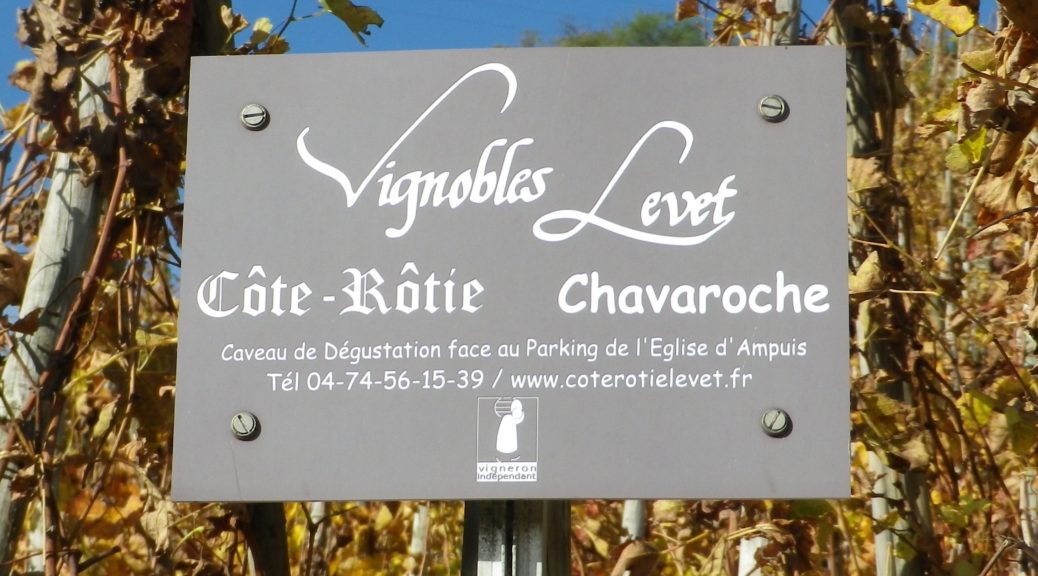What I Learned
France’s great Northern Rhone River Valley appellations begin about 20 miles downriver from Lyon by Ampuis. Eight appellations in total from north to south, the famous Cote Rotie appellation, on the river’s right bank, is where some of the worlds famous vineyards and wines begin.
The appellation begins in Saint Cyr-sur-le Rhone, and ends in Tupin-et-Semons. Ampuis, in the middle, is particularly well situated as its slopes face in a more southerly direction. Vines have been planted on the slopes overlooking Ampuis for over 2500 years. The town has two famous slopes: Cote Brune and Cote Blonde. Legend says that these names arose when the local count provided the slope now known as Cote Blonde as a dowry for his fair-haired daughter, and the slope now called Cote Brune for his brunette daughter. The soil in this appellation is an iron-rich schist soil, overlaid by limestone and granitic components. Some wine enthusiasts find in general that, due to slight soil differences, Cote Blonde produces a softer style of wine, and Cote Brune, with more clay in the soil mix, tends to result in bigger and more powerful wines.
The white varietals Marsanne, Roussanne, and Viognier grow here. However, the primary grape in this appellation, as with the Cornas and the Hermitage/Crozes-Hermitage appellations further downriver, is Syrah. The northern Rhone is truly Syrah country! But the Cote Rotie appellation is unique in how it makes its red wine. Vintners in Ampuis practice co-fermentation, which means crushing and fermenting different grape varietals together. (Most wines are not produced this way, rather the different grapes of a wine blend are crushed and fermented separately, then blended together.) Even more unusually in this case, the red grape Syrah is sometimes co-fermented with the white grape Viognier. The addition of Viognier helps to soften the Syrah tannins, and it brings a floral (often identified as violet) note to the end product. The appellation rules state that a minimum of 80% of the wine must come from Syrah, and a maximum of 20% may come from Viognier to be sold as an Appellation Cote Rotie wine.
What I Tasted
2013 Cote-Rotie, Millesime, Appellation Cote-Rotie Controlee, Vignobles Levet (Ampuis): A dry red Syrah wine with medium ruby red color; a memorable smoky and honey nose, with spice and red berries flavors; mild tannins.
2012 Cote-Rotie, Appellation Cote-Rotie Controlee, Domaine de Rosiers (Ampuis): A dry red wine cuvee (97% Syrah, 3% Viognier), with deep dark red color; red fruits, prunes, spice and smoky nose, and flavors of the same; medium tannins and a smooth, long finish.
2012 Cote-Rotie Syrah, Appellation Cote-Rotie Controlee, Bernard Burgaud: A dry red wine (100% Syrah), with dark red color; red fruits, prunes, smoky nose, and the same flavors; medium tannins and long finish.
2012 Cote-Rotie, Cote-Brune, Appellation Cote-Rotie Controlee Domaine Barge: A dry red wine cuvee (98% Syrah, 2% Viognier) with deep dark red color; luscious nose with scents of prunes, spice, ripe cherry; and flavors of prunes, spice and wood; strong tannins and medium finish.
